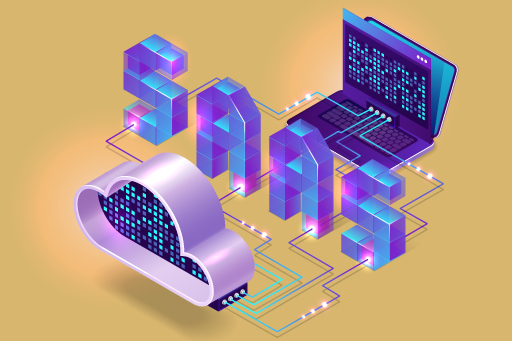
Software-as-a-service (SaaS) is a way tech companies deliver their software to approved end-users by hosting it through a third-party provider. This way, the end-users would not need to download the software locally and install it on their personal computers. Instead, they can easily get access to it through their web browsers.
SaaS which is also known as Cloud Based Software, differs from the traditional and old on-premise software delivery method in two major ways. First off, SaaS deployments don’t require any expensive or extensive hardware to function. Anyone with an internet connection and a web browser can access the software.
Also, SaaS allows for a subscription model where the user pays periodically, as opposed to the other on-premise delivery model where the software is purchased upfront and at once.
Due to these advantages, it’s no surprise that Software as a Service has become extremely popular. We at Tezza care about your business and in this article, we will highlight basic things you should know about SaaS.
What is Software-as-a-service (SaaS)?
Software as a Service is a software delivery system where the vendor uses a single copy designed for distribution in the manner of a multi-tenant architecture. This means that the source code provided is the same for all users of the software.
So, when updates to the software need to be made, it is only changed in one location and it would be instantly available to all end users. It is characterized as well by a subscription licensing model which is also centrally hosted.
Types of Software-as-a-service Products
There are a large number of SaaS products that have different properties and serve different purposes. Most of these SaaS products can be categorized into 3 groups: Packaged SaaS, Collaborative SaaS, and Technical SaaS.
- Packaged SaaS: These are SaaS products that help to manage specified tasks in the organization. They could be tasks like employee engagement, customer services, and relations, boosting the effectiveness of the marketing strategies, boosting the business’s digital sales strategy, An example of such a product is HubSpot.
- Collaborative SaaS: As the name implies, these are SaaS applications that help improve the collaboration potential of teams and help them work together effectively. They usually come with services like video conferencing, messaging, sharing documents and files, et cetera. Zoom is one such product.
- Technical SaaS: These are applications that offer tools that help manage and improve technical and developmental processes. Examples of Technical SaaS applications include Cloudsponge and Algolia.
Benefits of SaaS
There are many advantages of SaaS to a business. Here are some of them:
- One of the major benefits of SaaS is the fact that you don’t need to install or run any applications on your devices to make use of the products. This is what gives it an edge over other on-premise solutions.
- SaaS products also help reduce costs. The business that makes use of software as a service can cut revenue it would have used for things like hardware acquisition and maintenance, security, performance, software licensing, installation and support. All these would now be handled by the SaaS provider.
- SaaS is also built to be payment flexible. Customers can manage their budgets better because it gives them options to choose from that are flexible and beneficial. They also have the option of canceling the subscription to the service at any time.
- Also, it has a pay-as-you-go subscription model incorporated into it.
- It also makes upgrades to the software less strenuous.
Downsides of SaaS
As much as Software-as-a-Service has advantages, it also has its downsides. Here are some disadvantages of SaaS:
- One of the major problems people have with SaaS is the security concern, due to the data that would have to be entrusted to the third-party service provider.
- Also, for the benefits to be fully enjoyed, it requires a good and stable internet connection.
- Another major concern is the central operation: once the service is down from the provider’s side, every single user is also prevented from having access to the service. This is due to its multi-tenant architecture where only one provider is distributing to all the end-users.
Essentially while SaaS is the rave of the moment and is awesome, you should do your research carefully and determine if it would be in your interest to adopt it in your business. We’re always one click away to offer a quality business solution for the growth of your business anytime!
